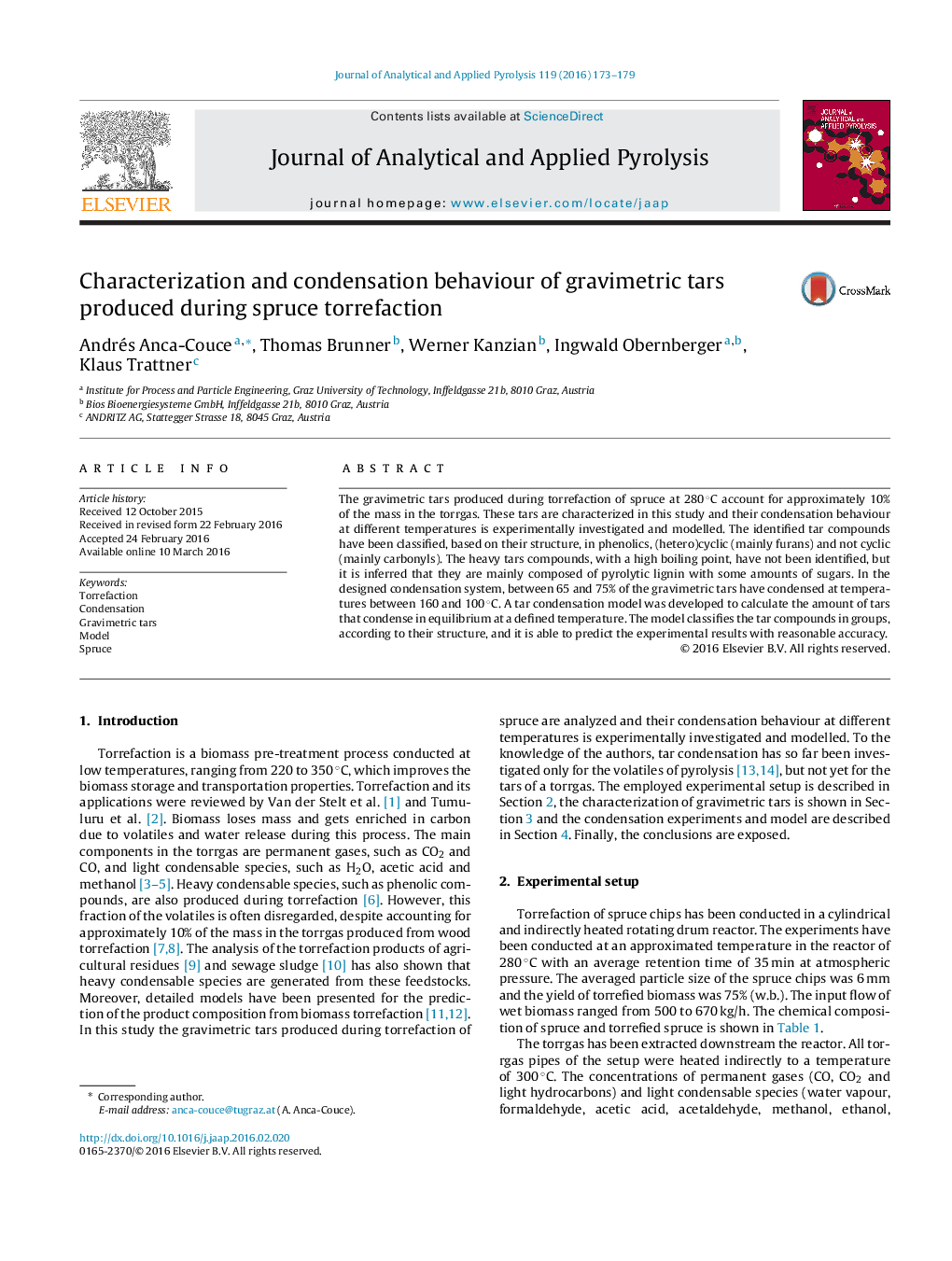| Article ID | Journal | Published Year | Pages | File Type |
|---|---|---|---|---|
| 7606585 | Journal of Analytical and Applied Pyrolysis | 2016 | 7 Pages |
Abstract
The gravimetric tars produced during torrefaction of spruce at 280 °C account for approximately 10% of the mass in the torrgas. These tars are characterized in this study and their condensation behaviour at different temperatures is experimentally investigated and modelled. The identified tar compounds have been classified, based on their structure, in phenolics, (hetero)cyclic (mainly furans) and not cyclic (mainly carbonyls). The heavy tars compounds, with a high boiling point, have not been identified, but it is inferred that they are mainly composed of pyrolytic lignin with some amounts of sugars. In the designed condensation system, between 65 and 75% of the gravimetric tars have condensed at temperatures between 160 and 100 °C. A tar condensation model was developed to calculate the amount of tars that condense in equilibrium at a defined temperature. The model classifies the tar compounds in groups, according to their structure, and it is able to predict the experimental results with reasonable accuracy.
Keywords
Related Topics
Physical Sciences and Engineering
Chemistry
Analytical Chemistry
Authors
Andrés Anca-Couce, Thomas Brunner, Werner Kanzian, Ingwald Obernberger, Klaus Trattner,
